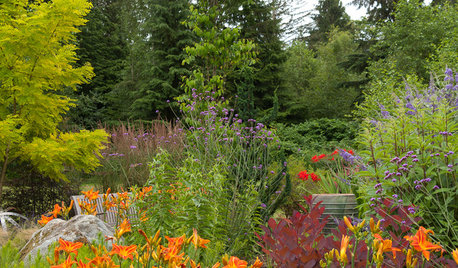Selfcrossing/selfing F1 Hybrid Hibiscus
brianmkerr
18 years ago
Related Stories

GARDENING GUIDESAttract Hummingbirds and Bees With These Beautiful Summer Flowers
Roll out a welcome mat for pollinators to keep your landscape in balance and thriving
Full Story
GARDENING GUIDESOh, Deer! 10 Native Flowers That Stand Up to the Herds
Keeping a garden amid hungry deer can be hard, but these plants should fare well
Full Story
PLANTING IDEASGreat Garden Combo: Planting for Fiery Color and Beautiful Wildlife
Draw winged wonders while maintaining a strong design aesthetic to please human visitors to your garden year-round
Full StorySponsored
Central Ohio's Trusted Home Remodeler Specializing in Kitchens & Baths
More Discussions






admmad
brianmkerrOriginal Author
Related Professionals
Maple Valley Landscape Architects & Landscape Designers · Beavercreek Landscape Architects & Landscape Designers · Brooklyn Center Landscape Architects & Landscape Designers · Danvers Landscape Contractors · Hampton Bays Landscape Contractors · Plainview Landscape Contractors · Seven Hills Landscape Contractors · Sun Valley Landscape Contractors · North Las Vegas Carpenters · Palmetto Bay Carpenters · Temple Carpenters · Coto De Caza Carpenters · Columbia Fence Contractors · Pasadena Fence Contractors · Silver Spring Fence Contractorsadmmad
admmad
brianmkerrOriginal Author
admmad
brianmkerrOriginal Author
admmad
brianmkerrOriginal Author
admmad
brianmkerrOriginal Author
admmad
brianmkerrOriginal Author
admmad
admmad
brianmkerrOriginal Author
admmad
brianmkerrOriginal Author
keking
keking
brianbruning